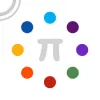Take a look inside 5 images
Volumize
Pros: Intuitive interface, automatic calculations, and built-in tools for reporting mean it's ready for classroom use right out of the box.
Cons: Automatic calculations remove the technical work from geometry, controls can be a bit finicky, and the shape palette is limited.
Bottom Line: A quick way to make solids more tangible, especially when paired with good lesson plans that get students working directly with formulas.
First, take a look at the great lesson plans available on NYSCI's website. Beyond that, you could use Volumize as an intro to, or stand-in for, the classic "build your own 3-D model and calculate its surface area" project (or a favorite twist on that one: Build a piñata!). It could also be a lovely advance organizer or the inquiry section of a classroom lesson on solids.
You could simply make Volumize part of a stable of math play activities, for filler days between lessons or after standardized testing times. Chemistry, physical-science, or digital-creation teachers can use it for a variety of purposes too (it's a great intro to 3-D modeling). Any place you can see using virtual models with handy calculations will be instantly accessible with Volumize.
Volumize is an app that allows students to import photos from their iPads (using the built-in cameras or any other file in their library) and then draw virtual 3-D geometric solids over the photo to roughly approximate its form. They can adjust the interface's measurement scale to accurately reflect real-world measurements, making this more than just a virtualization tool –- it's a powerful 3-D ruler, too. The app then automatically calculates the area and surface area, showing the steps and pieces of those calculations and a net of each solid. For compound shapes, it does all the combination work for you.
To take things a bit further, students and teachers can use the built-in planning, reporting, and reflecting tools to add text and other imagery to templates, which can then be sent to the teacher or classmates.
Volumize can get kids hooked on noticing solids in the real world, and for that it's a great tool for learning. It's part of the New York Hall of Science's "Noticing Tools" suite of apps, aimed at getting students to find math and science connections in their everyday lives using pseudo-augmented reality. It's learning goal seems to be making otherwise abstract geometric figures more real, and in that it succeeds. This is open-play discovery learning, and kids will make their own meaning about relationships between solids.
For more concrete, procedural work such as the proper use of formulas, you'll need to supplement with outside class time or resources. Everything is calculated for you here, which is great for inquiry but not great for skills practice.













